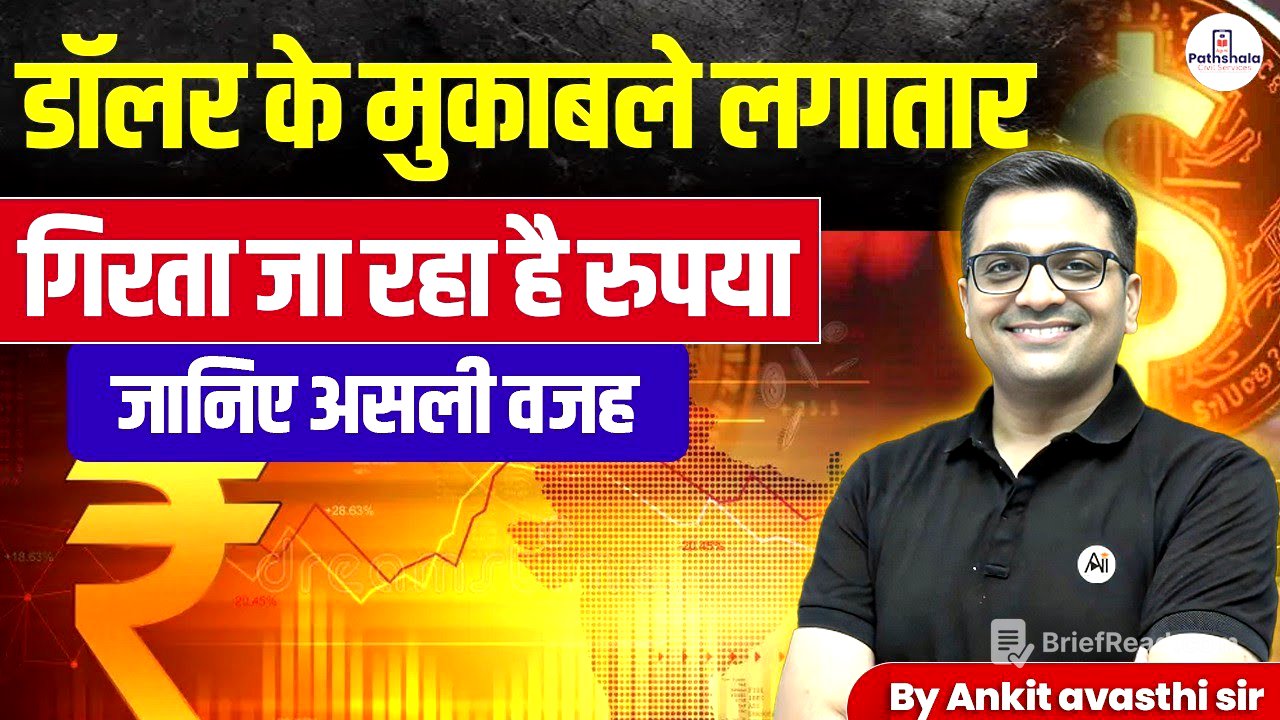TLDR;
This video explains why the Indian rupee's value isn't equal to the US dollar by using a mango tree analogy to illustrate economic productivity differences. It covers floating vs. fixed exchange rates, India's currency devaluation history to attract investment, and the dollar's global dominance due to its use in international trade. The video highlights how India earns dollars through services, cheap goods, and foreign investment to manage balance of payments and maintain economic stability.
- Economic productivity determines currency value.
- Floating and fixed exchange rates impact trade and investment.
- Dollar's dominance in global trade necessitates earning dollars.
- India devalues rupee to attract foreign investment.
Mango Tree Analogy: Understanding Currency Value [0:02]
The video starts with an example of two countries, X and Y, each given ₹100. Country X plants 100 mango trees, while country Y, through innovation, expands its mango production into various products, growing its economy. This illustrates that the value of money depends on the value of goods and economic activity it generates. Country Y's economy grew bigger, so the values of both countries are not equal.
Floating vs. Fixed Exchange Rates [2:15]
The video discusses two types of exchange rates: floating and fixed. A floating exchange rate is managed by the goods produced in the market, reflecting the difference in the value of rupees between countries based on what ₹1 can buy in each. A fixed exchange rate is when a country decides the value of its currency against others. Countries with fixed exchange rates may not attract as much Foreign Direct Investment (FDI) because investors might find better opportunities elsewhere.
India's Currency Devaluation Strategy [3:44]
India has devalued its currency in 1949, 1966, and 1991 to attract dollar investments by making the country appear cheaper to foreign investors. This strategy aims to encourage those holding dollars to invest in India, boosting the economy during times of crisis.
The Dollar's Global Dominance and India's Response [4:22]
The dollar dominates global trade because many countries accept it for transactions, unlike the rupee. To obtain dollars, India must encourage America to buy its goods and services. Since America is a larger economy, it dictates trade terms, leading India to offer cheap labor and services to earn dollars. These dollars are essential for settling international payments and avoiding a balance of payments crisis, like the one in 1991 when India had to mortgage gold.
Earning Dollars: Trade, Services, and Investment [7:42]
India earns dollars by providing services and cheap goods to the US, resulting in a trade surplus of around $118 billion. Additionally, India attracts Foreign Direct Investment (FDI) from America and other countries, who bring dollars to invest. To keep foreign trade and investment attractive, India continues to weaken the rupee. The video concludes by noting the rupee's decline from ₹3.30 per dollar in 1947 to ₹87, highlighting the ongoing efforts to manage the currency in the global economic landscape.









